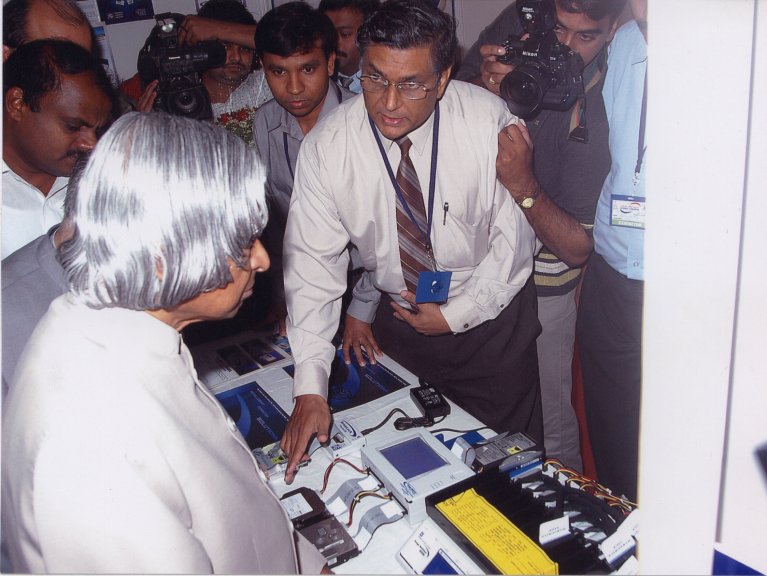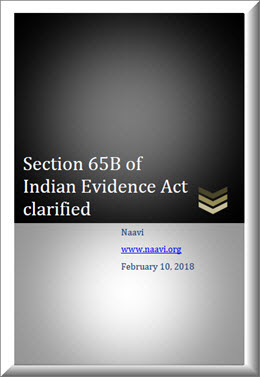After the Basheer judgement, there has been several discussions on the Section 65B (IEA) certification of electronic evidence for “Admissibility”. I suppose some clarity has dawned on the community with these discussions, though there are some areas which continue to create doubts.
In the recent SLP order issued by Supreme Court in the case of Shafhi Mohammad Vs State of Himachal Pradesh, the two member bench consisting of Adarsh Kumar Goel and Uday Umesh Lalit actually challenged the P.V Anvar Vs P. K Basheer judgement given by a three member bench and created confusion in the judicial circles.
One of the issues discussed in the Shafhi Mohammad case was how an electronic document present in a device not under the control of the producer of the evidence be produced for admissibility. The Court came to a very illogical decision that in such cases, Section 65B certificate itself is not required. We have already stated that the decision has to be ignored since a two member SLP order cannot over ride a three member Judgement.
Our objection to the order was that if at some point of time the presenter of evidence had access to an electronic document and today that document is not available for Section 65B certification, then it is a failure of the person in getting the Section 65B certificate at the time when he had access to it.
Since Section 65B certificate can be provided by any person who has a viewing access to the document, there should be no problem in getting the certificate if people are aware of the provision. Ignorance of law is not an excuse and hence if the original electronic document is no longer available and the earlier copy is not admissible because it is not Section 65B certified, then the evidence should be considered as lost.
Just because “Documentary Electronic Evidence” is lost, it does not mean that justice would be lost. It would be difficult of course but not entirely unthinkable.
For example, if you have just witnessed a murder before your eyes but did not take out your mobile and take a picture, the documentary evidence of murder is lost for ever. It does not mean that you can excuse the evidence itself since every body does not carry a camera around to capture the events happening around.
However, we are not trying to debate why the SLP order said what it said and whether it was out of ignorance or out of a need to challenge other Judicial order or for any other purpose. We have another point emerging out of the situation which we have already discussed but can be recalled again.
In many instances, we donot know if an electronic document before us is an “Evidence” or not. But an intelligent person would know if it is a “Potential Evidence”. For example, when we enter into a business deal, we want a written paper so that if tomorrow there is any dispute, we know what we have agreed upon. The document becomes an evidence if there is a dispute before a judicial authority. Until such time, it is a redundant piece of paper.
In the case of electronic documents, the “Potential Evidence” if any, has to be archived along with a Section 65B Certificate so that if and when it is required later, the electronic document is already bundled with the Certificate at the archival center.
Once such a document is archived, even if the original gets destroyed, the evidence is still admissible. However, no person should deliberately destroy an evidence which is in his hands since it may attract Section 65 or Section 67C of ITA 2008 or Section 204 of IPC if what is being destroyed is an “Evidence” at the time it was destroyed.
There is however the case where we may have an archived electronic document along with Section 65B certificate but the original which was in the hands of a third party (eg ISP/MSP). Though law provides that such a person can be summoned to produce the evidence, many times this may not be practical or the document might have been removed in the ordinary course of business by the holder who did not know that it was “Evidential Matter”.
It was to accommodate such a situation that Shafhi Mohammad order came to the absurd conclusion “Let’s do away with the Section 65B certificate itself”.
On the other hand, CEAC (Cyber Evidence Archival Center) when confronted with the challenge in the E Commerce scenario, thought differently and introduced a service called “Evidence Drop Box”.
Evidence Drop Box is a service provided by CEAC to ensure that “Contingent Evidence” can be submitted for Section 65B certification without any cost and held in “Contingent” condition for a period of 30 days. By the end of this 30 day period if the person decides to use the “Contingent Evidence” as “Evidence”, he may request for a Section 65B certificate and acquire it at the cost specified by CEAC.
The “Contingent Evidence” becomes “Evidence” when the contingency materializes. For example, in an E Commerce transaction, when a purchase has been made on the basis of a product description that has been mentioned on the E Commerce website, the information provided about the product is a “Marketing Information” and is read before the purchase decision is made but is more often not kept on record. If subsequently, a “Dispute” arises and the buyer or the seller is claiming that the product description was not what the product supplied indicates, the “Marketing Information” becomes an “Evidence”. The “Dispute” is therefore is the contingency under which the contingent evidence turns into evidence.
The CEAC-Evidence Drop Box provides an opportunity to the buyer to deposit the evidence before he completes the purchase with no financial stake until the contingency arises.
It will take some time for the market to absorb the utility of this proposition and also some time for CEAC to automate and fine tune the certification process but it will be a boon to E Commerce in India.
Explore it next time when you make any online purchase.
Naavi








